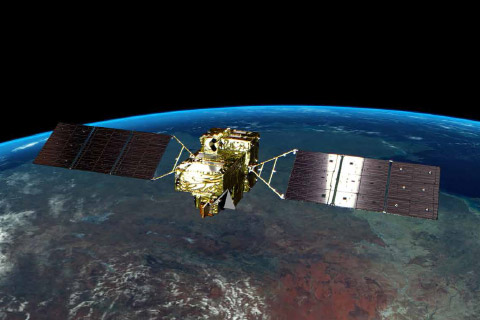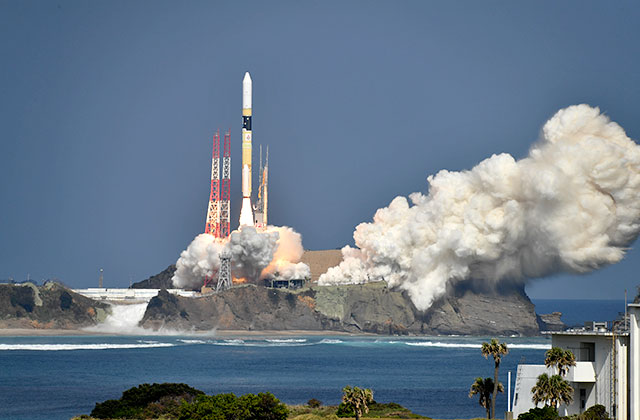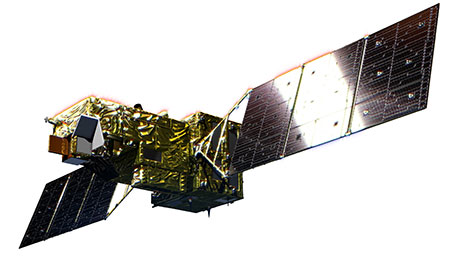About Greenhouse gases Observing SATellite-2 "IBUKI-2" (GOSAT-2)
 |
Taking over from IBUKI to enhance the functionality and performance of greenhouse gas observationsExperts say that greenhouse gases produced by human activity represent one of the biggest causes of global warming. The Intragovernmental Panel on Climate Change (IPCC), an international organization of specialists that conducts scientific research on climate change and evaluates related climate policies, released its Fifth Assessment Report in 2013. In the document, the authors warned that “Warming of the climate system is unequivocal... It is extremely likely that human influence has been the dominant cause of the observed warming since the mid-20th century... Continued emissions of greenhouse gases will cause further warming and changes in all components of the climate system.” |
|---|
Project Topics
indexSuccessful Launch, H-IIA Launch Vehicle No. 40 Encapsulating "IBUKI-2"(GOSAT-2) and KhalifaSat

|
The H-IIA Launch Vehicle No. 40 with the Greenhouse gases Observing SATellite-2 "IBUKI-2"(GOSAT-2) and KhalifaSat, a remote sensing Earth observation satellite onboard lifted off at 13:08:00 p.m. on October 29, 2018 (Japan Standard Time) from the Tanegashima Space Center. The launch and flight of H-IIA F40 proceeded as planned. So did the separation of GOSAT-2 and KhalifaSat, which was confirmed respectively at approximately 16 minutes and 09 seconds and 24 minutes and 15 seconds after lifto... |
|---|
Press Release
index-
- Nov. 9, 2018 (15:30) [release]
- First light Data for IBUKI-2's CAI-2
-
- Oct. 30, 2018 (06:30) [release]
- IBUKI-2 (GOSAT-2) Completion of Critical Operations Phase
Characteristics of Greenhouse gases Observing SATellite-2 "IBUKI-2" (GOSAT-2)
|
Global CO2 and CH4 distribution measurements of lower and upper atmosphere with the world highest spectral resolution instrument The IBUKI-2 “eye”: An upgraded IBUKI |
 |
|---|
Major Characteristics
| Main observation targets | Carbon dioxide, methane, carbon monoxide |
|---|---|
| Onboard instruments | Thermal And Near Infrared Sensor for carbon Observation - Fourier Transform Spectrometer (TANSO-FTS) Thermal And Near Infrared Sensor for carbon Observation - Cloud and Aerosol Imager (TANSO-CAI-2) |
| Size | 5.3m(X) x 2.0m(Y) x 2.8m(Z) (16.5m(Y))(when expanded in orbit) |
| Weight | 1,800 kg or less |
| Generated power | 5,000 W |
| Design life | 5 years |
| Altitude | 613km |
| Launch Vehicle | H-IIA Launch Vehicle |